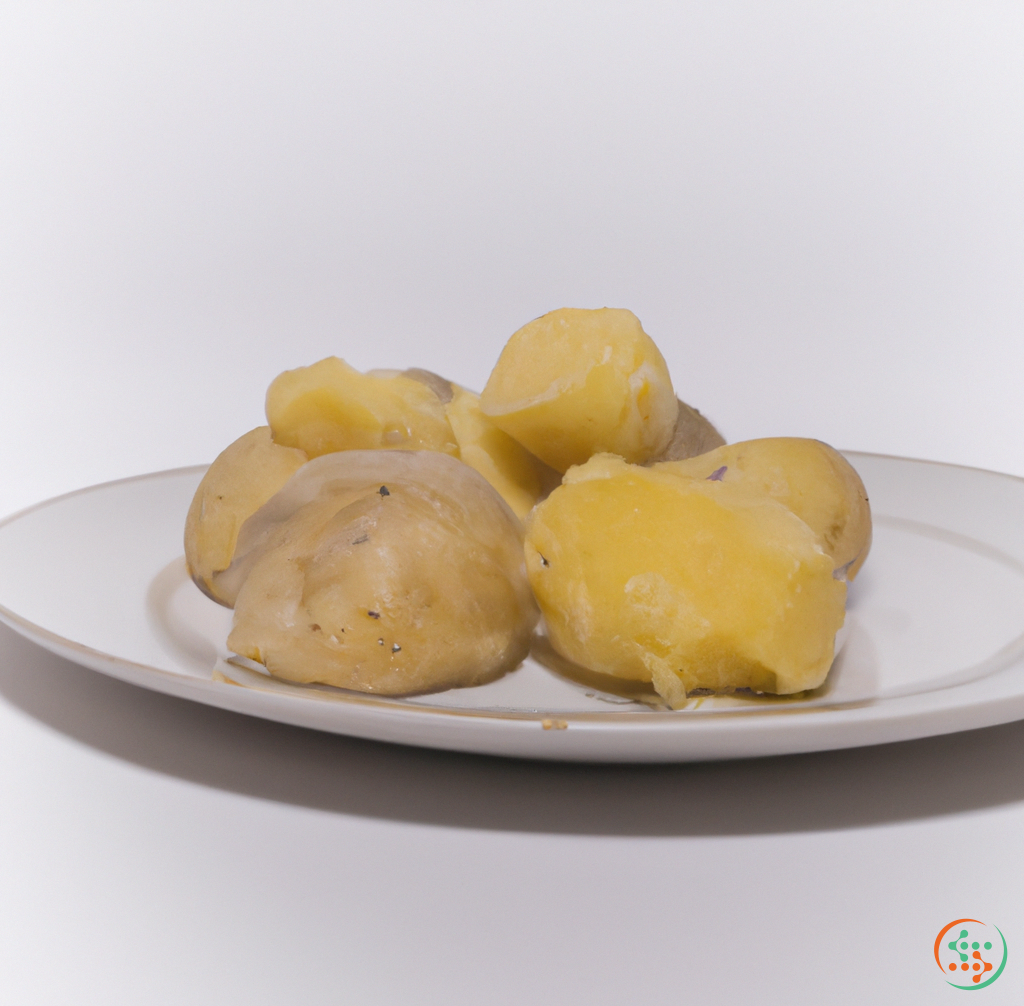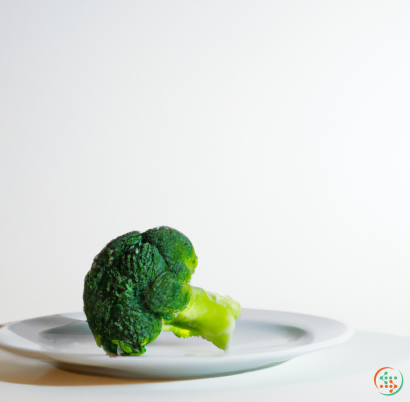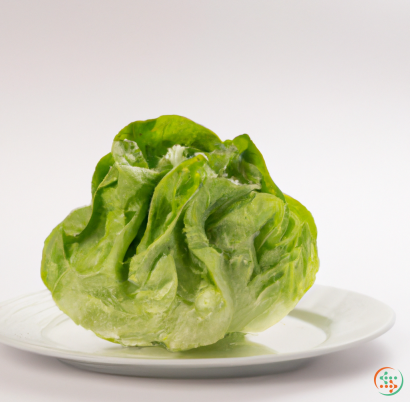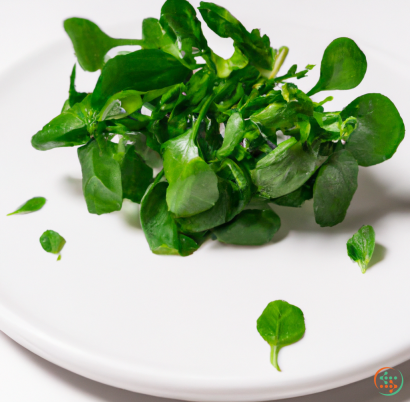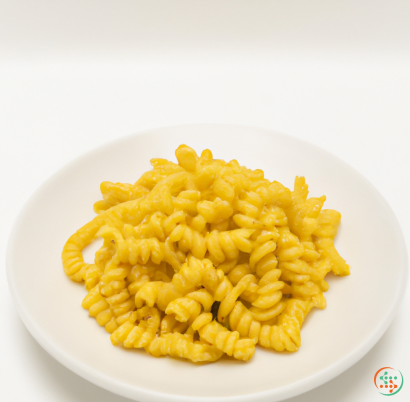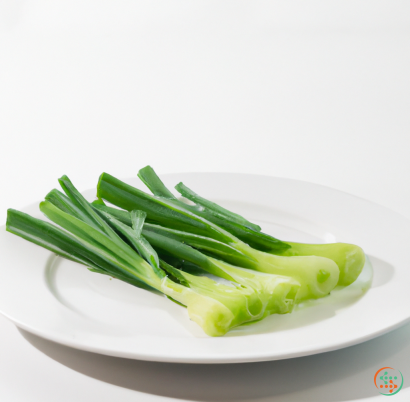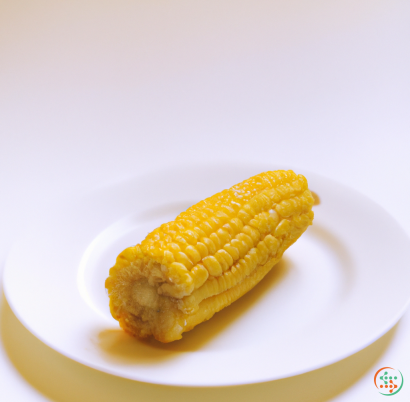Boiled Potatoes
What Are Boiled Potatoes?
Boiled potatoes are a type of potato dish prepared by immersing the potatoes in boiling water and cooking until they reach an edible state. It's a straightforward and versatile way to cook potatoes, as almost all varieties of potatoes can be boiled and you have full control over the cooking duration. Depending on the variety, boiled potatoes can be as simple as cooked, peeled, and cubed potatoes for use in a salad or a more complicated recipe. Boiled potatoes are a great side dish that can be served with many meals, or even as a satisfying lunch or snack.
How to Boil Potatoes
The general process for boiling potatoes is fairly straightforward. First, begin by selecting potatoes that are similar in size so that they will all cook at the same speed. Rinse the potatoes under cold water and then place them in a pot of cold water to cover. Bring the water up to a boil over medium-high heat and allow the potatoes to cook until they are easily pierced with a fork, usually 10-12 minutes. Once they are done, drain the water and let the potatoes cool before peeling and cutting them into cubes or slices.
When boiling potatoes, it's important to keep an eye on the pot and make sure that the potatoes are not overcooked. Overcooking will result in a mushy texture and loss of flavor. To prevent this, try to check the potatoes periodically and stir the pot every few minutes to make sure that the potatoes are cooked evenly.
Types of Potatoes for Boiling
When choosing potatoes for boiling, it is important to look for potatoes that have a low moisture content, such as russet or Yukon Gold potatoes. These potatoes will hold their shape better when boiled and result in a firmer texture. Other varieties, such as new potatoes or fingerling potatoes, are generally better suited for roasting or baking.
Flavored Boiled Potatoes
In addition to the plain boiled potato, there are several other tasty and interesting ways to flavor boiled potatoes. One easy method is to add spices, such as garlic powder, black pepper, or even cayenne pepper, to the boiling water. The potatoes will absorb the flavor as they cook.
For a more robust flavor, you can also sauté onions, garlic, and herbs in butter and then toss them with the boiled potatoes. You could also prepare a dressing and toss the boiled potatoes in it to give them a more complex flavor.
Finally, you can use boiled potatoes in salads. This can be as simple as tossing cubed boiled potatoes with a vinaigrette or as complicated as adding boiled potatoes to a potato salad. Making a potato salad with boiled potatoes is a great way to use up leftovers and make a new and exciting side dish.
Nutritional Benefits of Boiled Potatoes
Boiled potatoes are a nutritional powerhouse. They are nutrient dense, meaning that they are high in many essential vitamins and minerals but low in calories. Boiled potatoes are a good source of fiber, vitamin C, and potassium, as well as smaller amounts of calcium, iron, folate, and vitamins B6 and B12. Additionally, boiled potatoes are a good source of complex carbohydrates, which provide an important source of energy.
In addition to these nutritional benefits, boiled potatoes have also been studied for their potential health benefits. Studies have linked boiled potatoes with lower risk of certain types of cancers, improved heart health, and increased feelings of fullness after eating.
Conclusion
Boiled potatoes are a simple and versatile way to prepare potatoes for any meal. Whether you keep it simple or get creative with your flavors, boiled potatoes can be a delicious side dish or even a satisfying lunch or snack. Plus, boiled potatoes come with many nutritional benefits, making them a great addition to any diet. So, next time you’re in the mood for some potatoes, consider boiling them!
Boiled Potatoes: How They Travel from Farm to Table
Boiled potatoes are one of the most popular and versatile dishes around the world. While potatoes may often be used in organic form, boiled potatoes are just as popular in certain parts of the world. While this dish may seem simple, a lot of processes go into bringing boiled potatoes to the table. From seed to plate, many processes stemming from cultivation and preparation methods change the nutritional value as well as the different ways in which potatoes can be cooked and served. Knowing these processes can help us understand how boiled potatoes can make an appearance on dinner tables everywhere.
Cultivation of Boiled Potatoes
Potatoes are a fairly versatile crop that grows in several different climates, making them available all over the world. In countries where the climate is very temperate, potatoes can usually grow in the dry summer months, with some areas planting crops twice a year (spring and fall). For potatoes to grow at their best, they need a moderate climate and plenty of fertilizer, water, and sunshine.
The potatoes are first planted in the soil either using manual labor or automated machines. Traditionally, each potato had to be hand-planted into the soil and covered. Once planted, potato sticks are placed on the soil above the potatoes to protect them from birds and other pests, creating a tightly compacted field of potatoes. After planting the seeds in the soil, farmers allow about 10-12 weeks for the potatoes to mature, depending on the variety.
When the potatoes reach the mature stage, (commonly known as harvests) farmers can harvest them by mechanically digging out the potatoes from the soil or by manually picking them out. After harvesting, the potatoes must be cleaned to remove any dirt, diseases, or insects. The potatoes are then dried, sized, graded, and packed into wooden boxes, plastic crates, and sacks for distribution to wholesalers, retailers, and processors.
Processing of Boiled Potatoes
Once the potatoes are harvested, they are processed and packaged in order to make them ready for sale. This process involves cleaning, sorting, grading, and packaging potatoes into bags and boxes.
The cleaning process involves removing any dirt and debris that may be stuck to the potatoes. This is done by running them through an industrial cleaner or a water bath or by brushing off any soil and dirt. Then, the potatoes are sorted according to size, shape and skin quality – larger potatoes are typically sold at a higher price than smaller potatoes.
The potatoes are then graded according to their quality and appearance. The highest-grade potatoes have a smooth skin, minimal blemishes and no disease or discoloration. This grade of potatoes is typically used for boiling and frying, while the lower grades are often used for mashing and baking.
Finally, potatoes are packaged into various containers such as barrels, boxes, and bags for distribution. As potato shipments are typically very large and heavy, industrial machinery is typically used to move the potatoes from the processor to the store or restaurant. Some of these machines can lift up to 25,000lbs of potatoes at once.
Test of Boiled Potatoes
Once the potatoes have reached a store or restaurant, they must go through quality checks to ensure they are safe to eat. During this process, the potatoes are blanched to remove bacteria and any remaining dirt or debris. The potatoes are then inspected to make sure they meet the customer’s quality specifications.
Potatoes can also go through a series of taste and texture tests to assess their flavor and cooking properties. With this testing, analysts are able to determine the best way to cook the potatoes, as some potatoes are better when boiled, while others are best when baked or fried.
After the potatoes have passed all of the tests, they are now ready to be sold in the store. Potatoes can be sold in many different forms, from pre-washed potatoes in a bag to loose potatoes in the produce section.
Boiling of Boiled Potatoes
Now that the potatoes have arrived at a customer’s home, it is time to prepare them for a boiled potato dish. To do this, the potatoes must be first washed and peeled. This is done to remove any bacteria and dirt, as well as to ensure that the potatoes are cooked to the desired texture.
Once the potatoes are washed and peeled, they are placed in a pot of cold water. The water should be cold to ensure that the potatoes are cooked evenly. Then, the heat can be turned up and the potatoes can be brought to a boil. Boiling the potatoes allows them to become fully cooked while still retaining their shape and texture.
Depending on the recipe, the potatoes can be boiled with salt, garlic, herbs, or any number of spices. Boiled potatoes can also be served with any number of condiments, such as butter, sour cream, cheese, or chives.
Serving of Boiled Potatoes
Once the potatoes are cooked, they can be served in multiple ways. Commonly, boiled potatoes are served whole, sometimes accompanied by the spices or condiments listed above. Boiled potatoes can also be mashed, roasted in oil and served as french fries, or combined with other vegetables and served in potato salads.
Boiled potatoes can make a great accompaniment to burgers, steaks, or any other type of meat dish. They can also be served as a side to sandwiches or used in soups or stews. Boiled potatoes can even be enjoyed as a light meal by themselves.
Conclusion
Boiled potatoes are a classic dish that is enjoyed all around the world. While it may seem like a simple dish, there is a lot of work and care that goes into growing, processing, and cooking the potatoes before they reach our plates. Knowing the processes behind bringing boiled potatoes to the table can help us understand how to prepare them for the best possible results.
| Beta-Carotene | 0.001 mg | |
| Vitamin E | 0.01 mg | |
| Vitamin K | 0.0022 mg | |
| Vitamin C | 0.0074 grams | |
| Vitamin B1 | 0.1 mg | |
| Vitamin B2 | 0.02 mg | |
| Vitamin B3 | 0.00131 grams | |
| Vitamin B4 | 0.0132 grams | |
| Vitamin B5 | 0.51 mg | |
| Vitamin B6 | 0.27 mg | |
| Vitamin B9 | 0.009 mg |
| Calcium | 0.008 grams |
Daily Value 1.3 g
|
| Iron | 0.31 mg |
Daily Value 0.018 g
|
| Magnesium | 0.02 grams |
Daily Value 0.4 g
|
| Phosphorus | 0.04 grams |
Daily Value 1.25 g
|
| Potassium | 0.328 grams |
Daily Value 4.7 g
|
| Sodium | 0.005 grams |
Daily Value 2.3 g
|
| Zinc | 0.27 mg |
Daily Value 0.011 g
|
| Copper | 0.17 mg |
Daily Value 0.9 mg
|
| Manganese | 0.14 mg |
Daily Value 0.0023 g
|
| Selenium | 0.3 ug |
Daily Value 0.055 mg
|
| Tryptophan | 0.027 grams | |
| Threonine | 0.062 grams | |
| Isoleucine | 0.07 grams | |
| Leucine | 0.103 grams | |
| Lysine | 0.104 grams | |
| Methionine | 0.027 grams | |
| Cystine | 0.022 grams | |
| Phenylalanine | 0.076 grams | |
| Tyrosine | 0.064 grams | |
| Valine | 0.096 grams | |
| Arginine | 0.079 grams | |
| Histidine | 0.038 grams | |
| Alanine | 0.053 grams | |
| Aspartic Acid | 0.419 grams | |
| Glutamic Acid | 0.287 grams | |
| Glycine | 0.051 grams | |
| Proline | 0.062 grams | |
| Serine | 0.075 grams |
| Glucose | 0.33 grams |
|
| Fructose | 0.28 grams |
|
| Sucrose | 0.18 grams |
|
| Total Sugars | 0.131141 grams |
per 100g
|
| Palmitic acid (16:0) | 0.02 grams |
|
| Total Saturated fatty acids: | 0.02 g | |
| Linolenic acid (18:3) | 0.01 grams |
|
| Linoleic acid (18:2) | 0.03 grams |
|
| Total Polyunsaturated fatty acids: | 0.04 g | |
